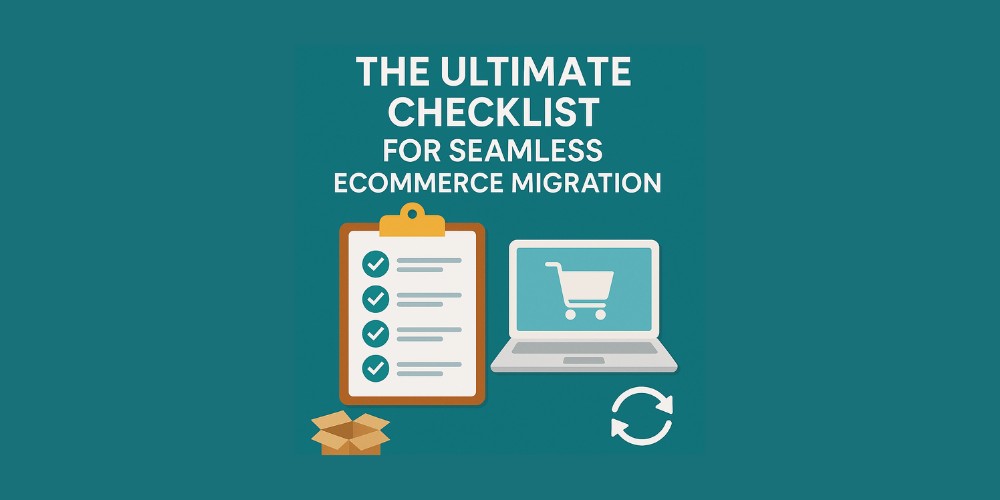


Ensure a smooth and successful eCommerce platform transition with our ultimate migration checklist. Minimize downtime, protect SEO, and keep sales flowing.
Migrating your eCommerce website is like open-heart surgery for your business. If done right, you get a faster, more scalable, and future-ready store. If mishandled, it can lead to broken links, SEO losses, downtime, and revenue drops.
This checklist will help you plan and execute a smooth migration—and explain why working with a professional eCommerce website migration service can make all the difference.
Common reasons for switching platforms include:
Regardless of the reason, a well-planned migration ensures smoother operations and sets the stage for growth.
Decide what you’re aiming for—speed, mobile optimization, UX improvements, or cost savings. Clear goals shape the migration process.
List all existing features, workflows, product categories, customer data, and customizations. Know what’s working and what isn’t.
Pick a platform (e.g., Shopify, Magento, WooCommerce) that aligns with your goals and resources. Unsure? A migration expert can help you decide.
Involve stakeholders from marketing, IT, and support. Bring in developers and SEO experts. Consider hiring an eCommerce migration service for full support.
Secure copies of:
A professional service will always start with backups.
Match your old data structure to the new one. Clean it up—remove duplicates, fix errors, streamline categories.
Replicate your theme or upgrade the design. Use data (like heatmaps) to guide better UX and improve mobile responsiveness.
Avoid traffic loss by:
5. Migrate Integrations & Apps
List your tools (analytics, email, shipping, payments) and confirm they work on the new platform. Reconfigure tracking codes as needed.
Create a redirect map to ensure old URLs lead to the right pages. Focus on high-traffic pages first.
Use a staging environment to check:
8. Launch and Monitor
Go live—but keep a close eye on:
Compare pre- and post-migration numbers:
Ask users:
Use feedback to guide improvements.
Now’s the time to add:
DIY migration may seem cost-effective but can lead to missed steps or data loss. A professional service provides:
Choose a provider with a proven track record and strong post-launch support.
eCommerce migration is complex—but manageable with the right checklist and support. If your current platform is holding you back, now’s the time to upgrade. With planning, testing, and expert help, you can migrate confidently and position your store for long-term success.
